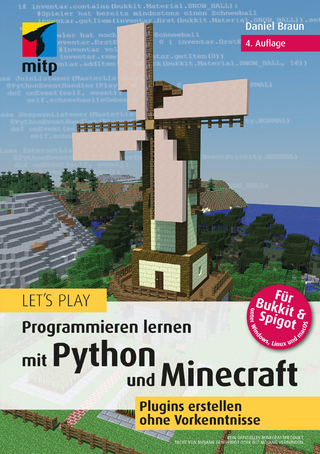
Animated program design
Springer International Publishing (Verlag)
978-3-031-04319-2 (ISBN)
The book is divided into four parts. Part I presents introductory material on basic problem solving and program design. It starts by reviewing the basic steps of a design recipe using structural recursion on a list. It then proceeds to review code refactoring-a common technique used to refine programs when a better or more elegant way is found to solve a problem-and introduces the reader to randomness. Next, Part II explores a new type of recursion called generative recursion. It navigates the reader through examples involving fractal image generation, efficient sorting, and efficient searching techniques such as binary, depth-first, and breadth-first search. Part III then explores a new type of recursion called accumulative (or accumulator) recursion. Examples used include finding a path in a graph, improving insertion sorting, and list-folding operations. Finally, Part IV explores mutation. To aid the reader in properly sequencing mutations it presents Hoare Logic and program correctness. In addition, it introduces vectors, vector processing, in-place operations, and circular data. Throughout the whole book complexity analysis and empirical experimentation is used to evaluate solutions.
This textbook targets undergraduates at all levels as well as graduate students wishing to learn about program design. It details advanced types of recursion, a disciplined approach to the use of mutation, and illustrates the design process by developing a video game exploiting iterative refinement.lt;p>Marco T. Morazán joined Seton Hall University in 1999 where he teaches at all levels of the Computer Science curriculum including his signature courses on Problem Solving and Programming. He is a strong proponent of program by design in which types guide program development and the author of multiple peer-reviewed articles on computer science education and the implementation of programming languages. Animated Program Design is the result of over ten years learning from his students how to teach them type-based programming and along with his previous Springer book Animated Problem Solving presents a year-long introduction to programming and Computer Science curriculum for first-year university students.
Part I: Basic Problem Solving and Program Design.- 1. The Science of Problem Solving.- 2. The N-Puzzle Problem.- 3. Randomness.- Part II: Generative Recursion.- 4. Introduction to Generative Recursion.- 5. Sorting.- 6. Searching.- 7. N-Puzzle Version 2.- 8. N-Puzzle Version 3.- Part III: Accumulative Recursion.- 9. Accumulators.- 10. N-Puzzle Versions 4 and 5.- 11. Iteration.- 12. N-Puzzle Version 6.- 13. Continuation-Passing Style.- Part IV: Mutation.- 14. Sharing Values.- 15. Mutation Sequencing.- 16. Vectors.- 17. In-Place Operations.- 18. The Chicken and the Egg Paradox.- Part V: Epilogue.- 19. Where to go from here.
| Erscheinungsdatum | 26.09.2023 |
|---|---|
| Reihe/Serie | Texts in Computer Science |
| Zusatzinfo | Illustration |
| Verlagsort | Cham |
| Sprache | englisch |
| Maße | 155 x 235 mm |
| Gewicht | 813 g |
| Einbandart | kartoniert |
| Themenwelt | Informatik ► Software Entwicklung ► Spieleprogrammierung |
| Schlagworte | Functional Programming • Game Programming • Heuristics • Iteration • object-oriented programming • program correctness • Program Design • Recursion • Type-Based Programming |
| ISBN-10 | 3-031-04319-7 / 3031043197 |
| ISBN-13 | 978-3-031-04319-2 / 9783031043192 |
| Zustand | Neuware |
| Informationen gemäß Produktsicherheitsverordnung (GPSR) | |
| Haben Sie eine Frage zum Produkt? |
aus dem Bereich


